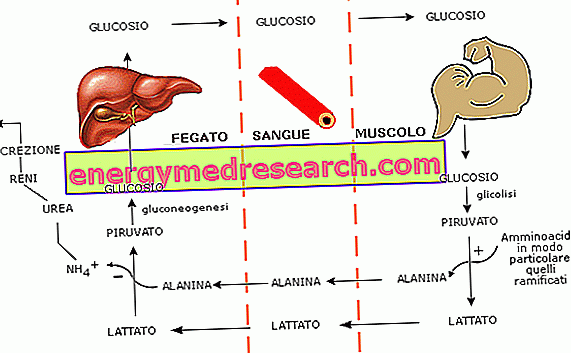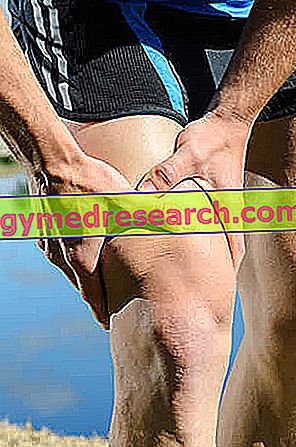See also: Beta-alanine
During exercise, the glucose-alanine cycle is a very important metabolic pathway, which allows the liver to extract glucose from an amino acid, alanine, from the active muscle.
An intense and prolonged physical effort leads to the depletion of glucose levels in the blood and to an increase in the blood concentration of lactic acid. The muscle is thus forced to increase the oxidation of fatty acids and amino acids for energy, in particular those with branched chain (BCAA). The carbon skeleton of the latter is used at a muscular level to produce energy through the krebs cycle, while the amino group is transferred first to glutamate and then to pyruvate, with the consequent formation of alanine. This amino acid is then released into the blood and carried to the liver, which, in turn, removes the amino group and uses the pyruvate thus obtained to form glucose, according to a process called gluconeogenesis. The newly formed glucose is then put back into circulation, with the aim of ensuring a constant supply of sugar to the brain.
In turn, the muscle can capture blood glucose and metabolize it for energy; at the end of the glycolysis two pyruvate molecules are thus obtained, which can enter the krebs cycle or be used to synthesize as many lactic acid (under anaerobic conditions) or alanine. At this point the cycle can start again.

The amino acid alanine, therefore, besides being a normal constituent of proteins, acts as a nitrogen carrier from the peripheral tissues to the liver. At this level, in fact, the amino group, which represents the toxic amino acid molecule, can enter the urea cycle and be eliminated in the urine without creating too much damage to the organism.
In skeletal muscle the synthesis of alanine is directly proportional to the intracellular concentration of pyruvate, which increases, for example, when there is a high degradation of fatty acids for energy purposes, with consequent slowing of the krebs cycle and formation of ketone bodies.
Analogous speech in anaerobic conditions: the pyruvate, not being able to be oxidized in the krebs cycle, is partially converted to alanine and partly to lactic acid. The latter is released into the circulation together with alanine and, similarly to it, transported to the liver, where it is used as a gluconeogenetic precursor (Cori cycle).
For all these reasons, the glucose-alanine cycle and the Cori cycle, although occurring even in resting conditions, are activated in a particular way during intense muscular exercise.
The glucose-alanine cycle is also stimulated by the increase in plasma glucocorticoid levels (cortisol) in response to a stressful event of physical origin (fasting, illness, surgery, intense effort) or psychic (performance anxiety, etc.).



